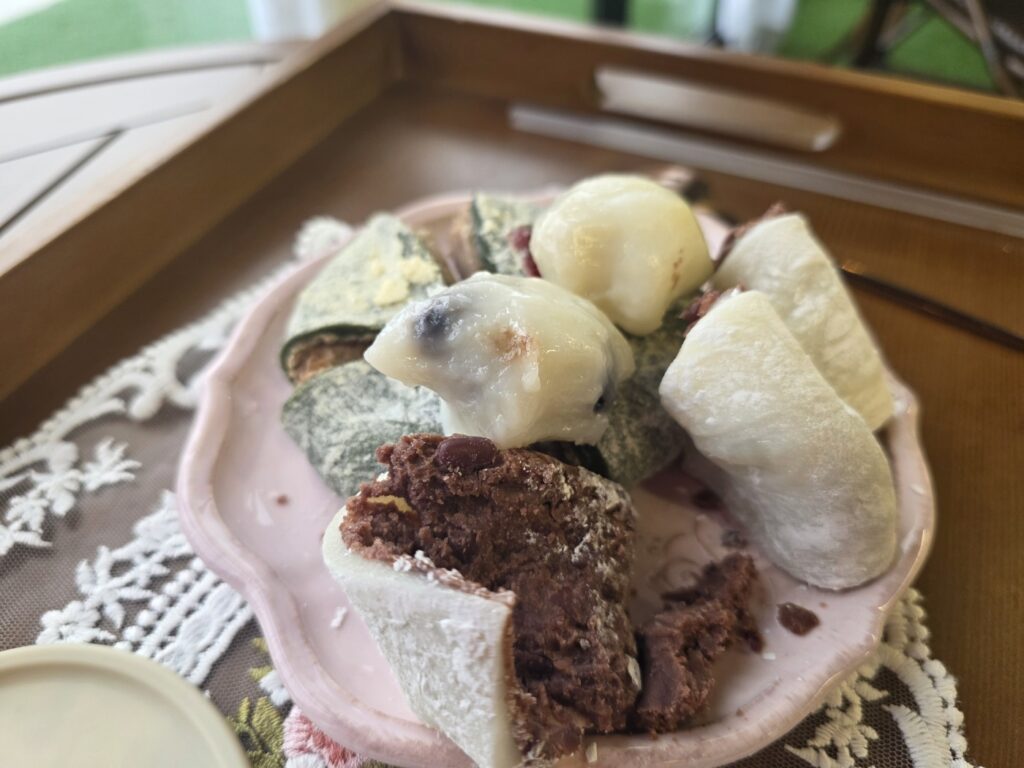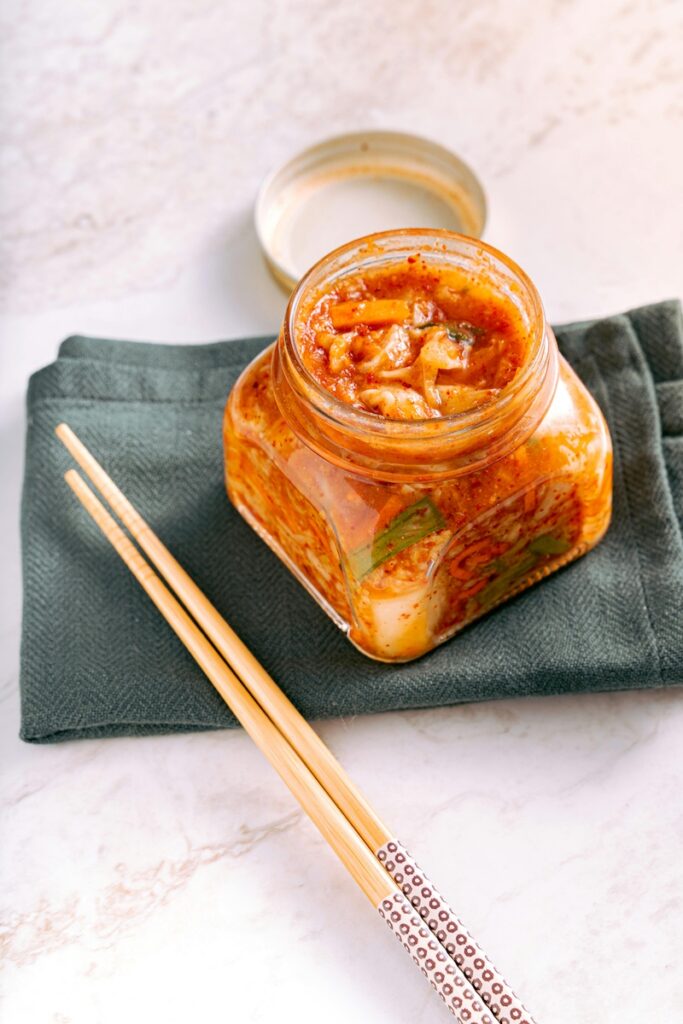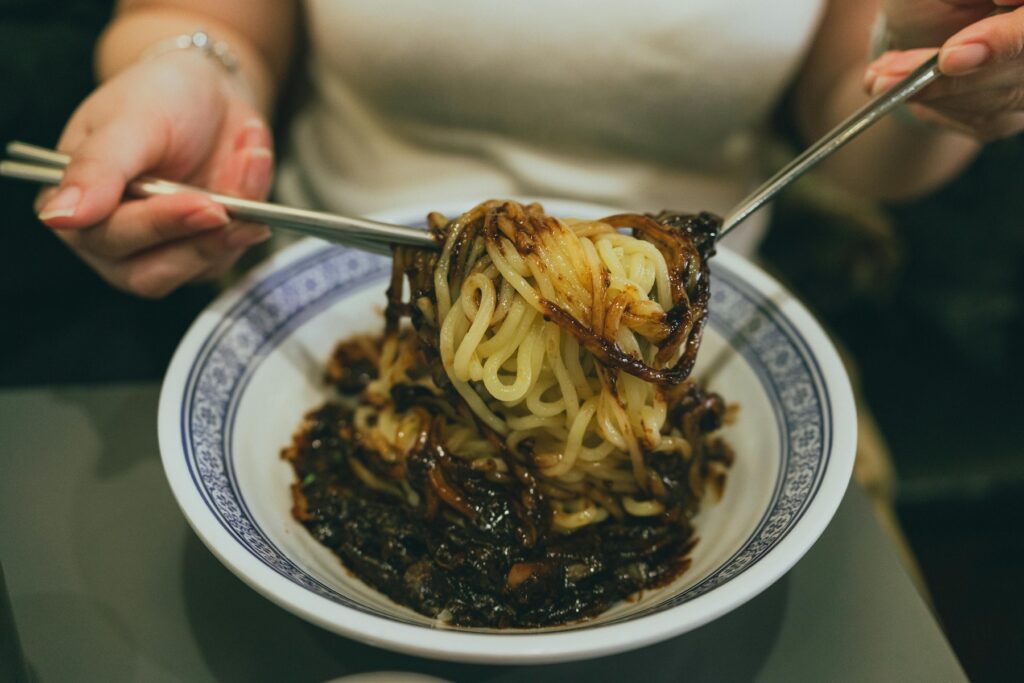Introduction
When you think of Korean food, spicy kimchi or sizzling barbecue might be the first things that come to mind. But Korea also has a sweet, chewy, and deeply meaningful food tradition — tteok (떡), or Korean rice cakes.
For centuries, tteok has been more than just food. It has symbolized celebration, hospitality, health, and community. From weddings and birthdays to ancestral rites and festivals, tteok has been present at Korea’s most important moments.
Today, this humble rice cake has evolved. You’ll find modern tteok cafés in Seoul and beyond, where rice cakes are paired with coffee, tea, and even wine. Some are traditional, chewy, and sweet; others are soft, nutty, and less sugary — making them appealing to health-conscious eaters.
This article explores the meaning of tteok, its varieties, cultural significance, modern innovations, and how foreigners can experience it in Korea.

1. The Cultural Meaning of Tteok in Korea
In Korean tradition, tteok is more than a snack. It carries symbolic meaning depending on the type and occasion.
- Celebration: On birthdays, baekseolgi (steamed white tteok) symbolizes purity and blessings.
- Weddings: injeolmi (bean-powder rice cake) represents fertility and prosperity.
- New Year & Chuseok: Families eat songpyeon (half-moon rice cakes filled with sesame, beans, or chestnuts).
- Ancestral Rites (jesa): Tteok is offered to ancestors as a mark of respect.
For foreigners, eating tteok is not just tasting food but participating in Korea’s cultural rituals.
2. Ingredients and Varieties of Tteok
Tteok is made primarily from rice or glutinous rice flour, but the variations are endless.
2.1 Classic Types of Tteok
- Injeolmi (인절미): Chewy rice cake coated in roasted soybean powder — nutty and mildly sweet.
- Songpyeon (송편): Crescent-shaped rice cakes steamed over pine needles.
- Baekseolgi (백설기): Fluffy steamed white rice cake — often used in celebrations.
- Garaetteok (가래떡): Long cylindrical rice cake — sliced into tteokguk (rice cake soup) for New Year.
- Hwajeon (화전): Colorful flower rice cakes pan-fried with edible petals.
2.2 Modern Twists
- Matcha Injeolmi: Blends Japanese green tea with Korean tradition.
- Chocolate or Coffee Tteok: Fusion flavors appealing to younger generations.
- Low-sugar or Vegan Tteok: Focused on health and natural ingredients.
Tteok can be as light as a tea snack or as filling as a meal replacement, thanks to its high calorie and nutrient density.
3. Tteok vs. Western Breads and Cakes
For foreigners, understanding tteok becomes easier when compared to Western foods:
- Injeolmi vs. Mochi (Japan): Similar chewy texture, but injeolmi is nuttier due to soybean powder.
- Baekseolgi vs. Sponge Cake: Both are soft and fluffy, but baekseolgi has no butter or eggs.
- Songpyeon vs. Filled Dumplings: Similar in shape, but made with rice flour and filled with sweet ingredients.
- Hwajeon vs. Pancakes: Small, pan-fried, often with natural decorations like flowers.
Unlike Western cakes, tteok tends to be less sugary, focusing more on natural flavors.
4. Tteok in Modern Korea: The Rise of Tteok Cafés
In the last decade, Seoul and other cities have seen a rise in tteok cafés — spaces where traditional rice cakes meet modern coffee culture.
4.1 Famous Tteok Cafés in the Seoul Metropolitan Area
- Baekmidang (백미당) – Offers injeolmi ice cream paired with traditional tteok.
- Tteok Café Mujigae (무지개 떡 카페) – Known for colorful rainbow rice cakes.
- Seoul Angmusae (서울 앙무새) – A trendy café where injeolmi meets lattes.
- Namdo Tteokjip (남도 떡집) – Famous for handmade tteok with natural ingredients.
👉 External reference: Visit Korea – Traditional Rice Cake Guide
4.2 Why Tteok Cafés Are Popular
- Nostalgia: Older generations relive their memories.
- Novelty: Younger people see tteok as fashionable.
- Accessibility: Foreigners can try tteok in familiar coffee shop settings.
5. Pairing Tteok with Drinks
Traditionally, tteok is eaten with tea. But modern cafés show endless possibilities:
- Traditional Pairings: Green tea, barley tea (boricha), omija tea (five-flavor berry tea).
- Modern Pairings: Iced Americano, lattes, matcha, even sparkling water.
- Special Pairings: Sweet wines or makgeolli (Korean rice wine) with savory tteok.
For foreigners, trying tteok with coffee is the easiest entry point — it feels familiar yet unique.
6. How to Eat Tteok Properly
- Use hands or chopsticks depending on type.
- Eat slowly — tteok is dense and chewy.
- Be cautious: Chewy tteok can be difficult for children or elderly people.
- Share: Tteok is often served in sets, encouraging communal eating.
7. Where Foreigners Can Experience Tteok
- Traditional Markets: Gwangjang Market (Seoul), Namdaemun Market.
- Department Stores: Shinsegae and Lotte food halls sell luxury tteok.
- Templestay Programs: Serve vegetarian-friendly tteok.
- Tteok Museums: The Korea Rice Cake Museum in Seoul offers hands-on workshops.
8. Why Tteok Is Both Humble and Luxurious
Tteok sits at a cultural crossroads:
- Everyday snack for farmers and workers in history.
- Luxury gift in ornate boxes for weddings and holidays.
- Modern gourmet item in fusion cafés.
This duality makes tteok uniquely Korean — accessible yet refined.
9. Practical Tips for Foreign Visitors
- Start with injeolmi if you’re new — mild and easy to enjoy.
- Try tteok cafés in Seoul for modern experiences.
- Bring some home as a souvenir — vacuum-packed versions travel well.
- Be mindful of texture — chew carefully!
10. Final Thoughts
Tteok is more than food — it’s a living piece of Korean heritage. For foreigners, it’s both an introduction to tradition and a window into modern creativity.
Whether you try chewy injeolmi at a traditional market, colorful songpyeon during Chuseok, or a latte with matcha tteok in a trendy café, you’ll experience Korea through its flavors, textures, and hospitality.
So next time you’re in Korea, don’t just try barbecue and kimchi — sit down with a plate of tteok, sip your coffee, and taste centuries of culture in one bite.

